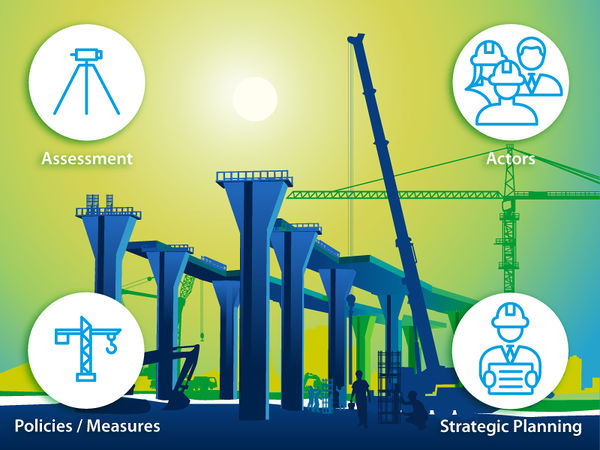Knowledge fuels change
For over a decade, Energypedia has shared free, reliable energy expertise with the world.
We’re now facing a serious funding gap.
Help keep this platform alive — your donation, big or small, truly matters!
Thank you for your support
SE4Jobs Toolbox - Co-benefits
SE4Jobs Toolbox – Laying the foundations for a sustainable development
| Existing Capacities | Co-benefits | Trade-offs |
ToolsPRODUSE EQuIP CADRE Interactive AILEG HELIO ELMA |
What is the issue of co-benefits about? [Expand]
Expanding RE and improving EE can lead to numerous co-benefits, which can (more than) justify the high upfront investments. For example, co-benefits include:
Providing evidence for these co-benefits can strengthen their legitimacy and boost support or reduce opposition. They should therefore be taken into account from the outset, alongside the main motivations in energy policy for investing in RE and EE. Why is the issue of co-benefits important for the expansion of RE and EE? [Expand]
Strategies and policy measures that advance RE and EE compete with other policy goals over (more or less) scarce resources. Quite often, superficial assessments of the various technologies underestimate the benefits of a reduced dependency on fossil fuel energy, all the more so as externalities are generally not taken into account in the energy price. A better awareness of what co-benefits exist, and how they can be ‘harvested’ and distributed, can substantially increase support for RE and EE policies and investments. They are therefore vital for any large-scale and truly sustainable transition towards a new, low-carbon energy mix. What are key questions for addressing the issue of co-benefits? [Expand]
Identifying the co-benefits of RE/EE can support your efforts in at least two key ways: by broadening your support base among societal stakeholders and by showing that the co-benefits for society outweigh the initial investment costs. Therefore, you have to (a) correctly identify the key concerns of the most relevant actors in your policy context and ensure that your respective roll-out strategies address them, (b) assess how they are likely to react to your proposals and whether they may turn into supporters or not, and (c) collect and communicate conclusive evidence substantiating the various positive (or negative) consequences of investments in RE/EE in the short and longer term. Thus, key questions to consider are:
How can the issue of co-benefits be addressed? [Expand]
Data to provide evidence on the overall impacts of RE/EE or to estimate all the co-benefits for society are not always readily available. As a first step, you can review what data are already on offer – e.g. on existing and potential employment and value creation in RE/EE or on the use of UNFCCC carbon credits to finance investments. Secondly, data can often be derived using the tools, methods and methodologies outlined in the section on the assessment of capacities for RE and EE Such models and scenarios provide evidence of the possible co-benefits for your country in the short and longer term. Thirdly, a further source of evidence can be studies on the co-benefits of RE/EE in other countries. While this approach cannot replace a thorough analysis of the impacts in your case, it can indicate which stakeholders might be affected and how, and therefore whether they are likely to support, oppose or take a neutral stance on the expansion of RE and EE. Practical aspects of the issue an good practice options [Expand]
[Text] |
Good Practices
Brazil China India Mexico South Africa Turkey |
Reference
|
This article is part of the RE-ACTIVATE project. RE-ACTIVATE “Promoting Employment through Renewable Energy and Energy Efficiency in the MENA Region” is implemented by the Deutsche Gesellschaft für Internationale Zusammenarbeit (GIZ) GmbH on behalf of the German Ministry for Economic Cooperation and Development (BMZ). |




















